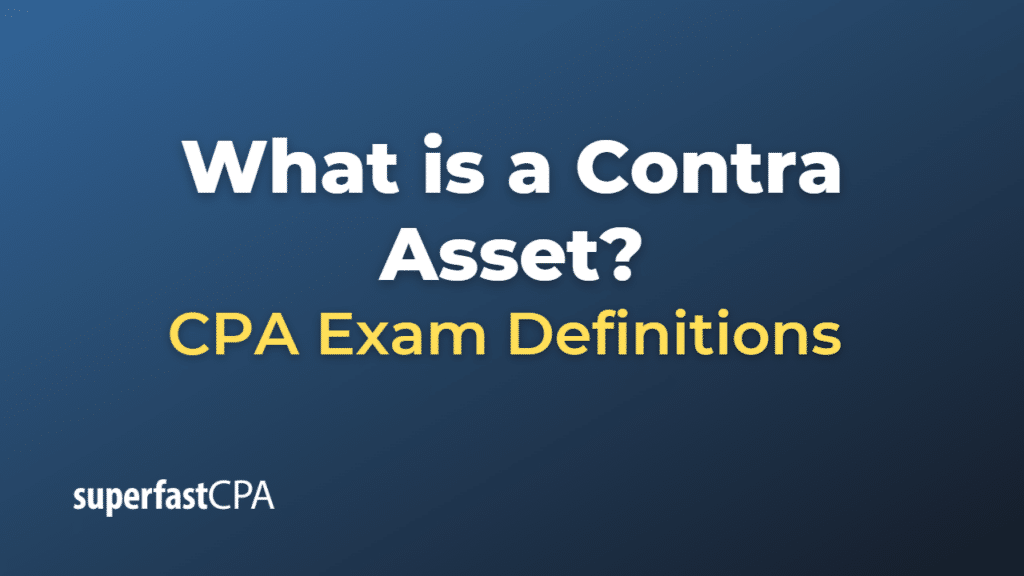Contra Asset
A contra asset is a type of contra account that is used to offset the balance of an associated asset account in financial accounting. A contra asset account has a credit balance, which is opposite to the normal debit balance of an asset account. The purpose of a contra asset account is to record adjustments, allowances, or depreciation related to a specific asset, resulting in a more accurate representation of the net value of that asset on the financial statements.
Some common examples of contra asset accounts include:
- Accumulated Depreciation: This contra asset account is paired with a fixed asset account, such as equipment, buildings, or vehicles, and records the accumulated depreciation of the asset over time. As the asset depreciates, the balance in the accumulated depreciation account increases, reducing the net book value of the asset on the balance sheet.
- Allowance for Doubtful Accounts: This contra asset account is associated with accounts receivable and records an estimate of the amount of receivables that may not be collectible. The allowance for doubtful accounts reduces the net accounts receivable reported on the balance sheet.
Contra asset accounts provide more detailed information to financial statement users by showing both the gross and net amounts of the related asset accounts. They also help organizations track specific adjustments and discrepancies, allowing for better financial analysis and decision-making.
Example of a Contra Asset
Let’s consider a fictional example of a small business called “GreenThumb Nursery” to illustrate the use of contra asset accounts in financial accounting.
GreenThumb Nursery has the following asset accounts and associated contra asset accounts:
- Accounts Receivable and Allowance for Doubtful Accounts:
GreenThumb has an accounts receivable balance of $40,000, which represents the total amount owed by customers for purchases made on credit. Based on past experience and industry trends, the company estimates that around 3% of these receivables may not be collectible due to various reasons, such as customers’ financial difficulties or disputes over product quality.
To account for this potential loss, GreenThumb creates a contra asset account called “Allowance for Doubtful Accounts” with a credit balance of $1,200 (3% of $40,000). On the balance sheet, the net accounts receivable will be reported as $38,800 ($40,000 – $1,200).
- Vehicles and Accumulated Depreciation:
GreenThumb has purchased delivery vehicles worth $30,000, which have an estimated useful life of 5 years and no residual value. The company uses the straight-line method of depreciation, resulting in an annual depreciation expense of $6,000 ($30,000 / 5 years).
To record the depreciation, GreenThumb creates a contra asset account called “Accumulated Depreciation – Vehicles.” After the first year, the accumulated depreciation account will have a credit balance of $6,000, reducing the net book value of the vehicles to $24,000 ($30,000 – $6,000) on the balance sheet. This process continues each year until the vehicles are fully depreciated.
In this example, the contra asset accounts (Allowance for Doubtful Accounts and Accumulated Depreciation – Vehicles) are used to provide more accurate and detailed information about the related asset accounts (Accounts Receivable and Vehicles), allowing for better financial analysis and decision-making.













